Influence of Combined Action of Steel Fiber and MgO on Chloride Diffusion Resistance of Concrete
Abstract
1. Introduction
2. Materials and Methods
2.1. Materials
2.2. Experimental
2.2.1. Split Tensile Test
2.2.2. Chloride Diffusion Test
2.2.3. MIP Test
2.2.4. SEM Test
3. Results
3.1. Failure Pattern of Concrete
3.2. Combined Action of Steel Fiber and MgO on Split Tensile Strength
3.3. Combined Action of Steel Fiber and MgO on Chloride Diffusion Resistance
3.4. Combined Action of Steel Fiber and MgO on Porosity of Concrete
3.5. Combined Action of Steel Fiber and MgO on Interfacial Transition Zone
4. Conclusions
Author Contributions
Funding
Acknowledgments
Conflicts of Interest
References
- Feng, J.; Sun, W.; Zhai, H.; Wang, L.; Dong, H.; Wu, Q. Experimental Study on Hybrid Effect Evaluation of Fiber Reinforced Concrete Subjected to Drop Weight Impacts. Materials 2018, 11, 2563. [Google Scholar] [CrossRef]
- Amini, F.; Barkhordari Bafghi M, A.; Safayenikoo, H.; Sarkardeh, H. Strength of Different Fiber Reinforced Concrete in Marine Environment. Mater. Sci. 2018, 24, 204–211. [Google Scholar] [CrossRef]
- Ma, K.; Qi, T.; Liu, H.; Wang, H. Shear Behavior of Hybrid Fiber Reinforced Concrete Deep Beams. Materials (Basel, Switzerland) 2018, 11, 2023. [Google Scholar] [CrossRef]
- Yang, G.; Wei, J.; Yu, Q.; Huang, H.; Li, F. Investigation of the Match Relation between Steel Fiber and High-Strength Concrete Matrix in Reactive Powder Concrete. Materials (Basel, Switzerland) 2019, 12, 1751. [Google Scholar] [CrossRef]
- Alsaif, A.; Bernal, S.A.; Guadagnini, M.; Pilakoutas, K. Durability of Steel Fibre Reinforced Rubberised Concrete Exposed to Chlorides. Constr. Build. Mater. 2018, 188, 130–142. [Google Scholar] [CrossRef]
- Gao, D.; Zhang, L.; Zhao, J.; You, P. Durability of Steel Fibre-Reinforced Recycled Coarse Aggregate Concrete. Constr. Build. Mater. 2020, 232, 117119. [Google Scholar] [CrossRef]
- Afroughsabet, V.; Biolzi, L.; Monteiro, P.J.M. The Effect of Steel and Polypropylene Fibers On the Chloride Diffusivity and Drying Shrinkage of High-Strength Concrete. Composites Part B Engineering 2018, 139, 84–96. [Google Scholar] [CrossRef]
- Guo, Y.; Hu, X.; Lv, J. Experimental Study on the Resistance of Basalt Fibre-Reinforced Concrete to Chloride Penetration. Constr. Build. Mater. 2019, 223, 142–155. [Google Scholar] [CrossRef]
- Wang, Y.; Zhang, S.; Niu, D.; Su, L.; Luo, D. Strength and Chloride Ion Distribution Brought by Aggregate of Basalt Fiber Reinforced Coral Aggregate Concrete. Constr. Build. Mater. 2020, 234, 117390. [Google Scholar] [CrossRef]
- Ramli, M.; Kwan, W.H.; Abas, N.F. Strength and Durability of Coconut-Fiber-Reinforced Concrete in Aggressive Environments. Constr. Build. Mater. 2013, 38, 554–566. [Google Scholar] [CrossRef]
- Ding, Y.; Bai, Y. Fracture Properties and Softening Curves of Steel Fiber-Reinforced Slag-Based Geopolymer Mortar and Concrete. Materials (Basel, Switzerland) 2018, 11, 1445. [Google Scholar] [CrossRef]
- Li, F.; Cao, C.; Cui, Y.; Wu, P. Experimental Study of the Basic Mechanical Properties of Directionally Distributed Steel Fibre-Reinforced Concrete. Adv. Mater. Sci. Eng. 2018, 1–11. [Google Scholar] [CrossRef]
- Ige, O.; Barnett, S.; Chiverton, J.; Nassif, A.; Williams, J. Effects of Steel Fibre-Aggregate Interaction on Mechanical Behaviour of Steel Fibre Reinforced Concrete. Adv. Appl. Ceram. 2017, 116, 193–198. [Google Scholar] [CrossRef]
- Xu, L.; Huang, C.; Liu, Y. Expansive Performance of Self-Stressing and Self-Compacting Concrete Confined with Steel Tube. J. Wuhan Univ. Technology-Mater. Sci. Ed. 2007, 22, 341–345. [Google Scholar] [CrossRef]
- Hadi, M.N.S.; Al-Tikrite, A. Behaviour of Fibre-Reinforced RPC Columns Under Different Loading Conditions. Constr. Build. Mater. 2017, 156, 293–306. [Google Scholar] [CrossRef]
- Choi, W.C.; Jung, K.Y.; Jang, S.J.; Yun, H.D. The Influence of Steel Fiber Tensile Strengths and Aspect Ratios on the Fracture Properties of High-Strength Concrete. Materials (Basel) 2019, 12, 2105. [Google Scholar] [CrossRef]
- Mo, L.; Deng, M.; Tang, M.; Al-Tabbaa, A. MgO Expansive Cement and Concrete in China: Past, Present and Future. Cement Concrete Res. 2014, 57, 1–12. [Google Scholar] [CrossRef]
- Polat, R.; Demirboğa, R.; Khushefati, W.H. Effects of Nano and Micro Size of CaO and MgO, Nano-Clay and Expanded Perlite Aggregate on the Autogenous Shrinkage of Mortar. Constr. Build. Mater. 2015, 81, 268–275. [Google Scholar] [CrossRef]
- Mo, L.; Deng, M.; Tang, M. Effects of calcination condition on expansion property of MgO-type expansive agent used in cement-based materials. Cem. Concr.Res. 2010, 40, 437–446. [Google Scholar] [CrossRef]
- Dung, N.T.; Unluer, C. Improving the Performance of Reactive MgO Cement-Based Concrete Mixes. Constr. Build. Mater. 2016, 126, 747–758. [Google Scholar] [CrossRef]
- Jiang, F.; Mao, Z.; Deng, M.; Li, D. Deformation and Compressive Strength of Steel Fiber Reinforced MgO Concrete. Materials 2019, 12, 3617. [Google Scholar] [CrossRef] [PubMed]
- MOHURD. Standard for Test Method of Mechanical Properties of Ordinary Concrete, GB/T 50081-2016; China Standards Press: Beijing, China, 2016. [Google Scholar]
- ASTM. Standard Test Method for Electrical Indication of Concrete’s Ability to Resist Chloride Ion Penetration, C1202; ASTM International: West Conshohocken, PA, USA, 2012. [Google Scholar]
- Zhang, M.; Li, H. Pore Structure and Chloride Permeability of Concrete Containing Nano-Particles for Pavement. Constr. Build. Mater. 2011, 25, 608–616. [Google Scholar] [CrossRef]
- Poon, C.S.; Kou, S.C.; Lam, L. Compressive Strength, Chloride Diffusivity and Pore Structure of High Performance Metakaolin and Silica Fume Concrete. Constr. Build. Mater. 2006, 20, 858–865. [Google Scholar] [CrossRef]
- Güneyisi, E.; Gesoğlu, M.; Mermerdaş, K. Improving Strength, Drying Shrinkage, and Pore Structure of Concrete Using Metakaolin. Mater. Struct. 2008, 41, 937–949. [Google Scholar] [CrossRef]
- Guo, J. The Theoretical Research of the Pore Structure and Strength of Concrete. Ph.D. Thesis, Zhejiang University, Hangzhou, China, 2004. [Google Scholar]
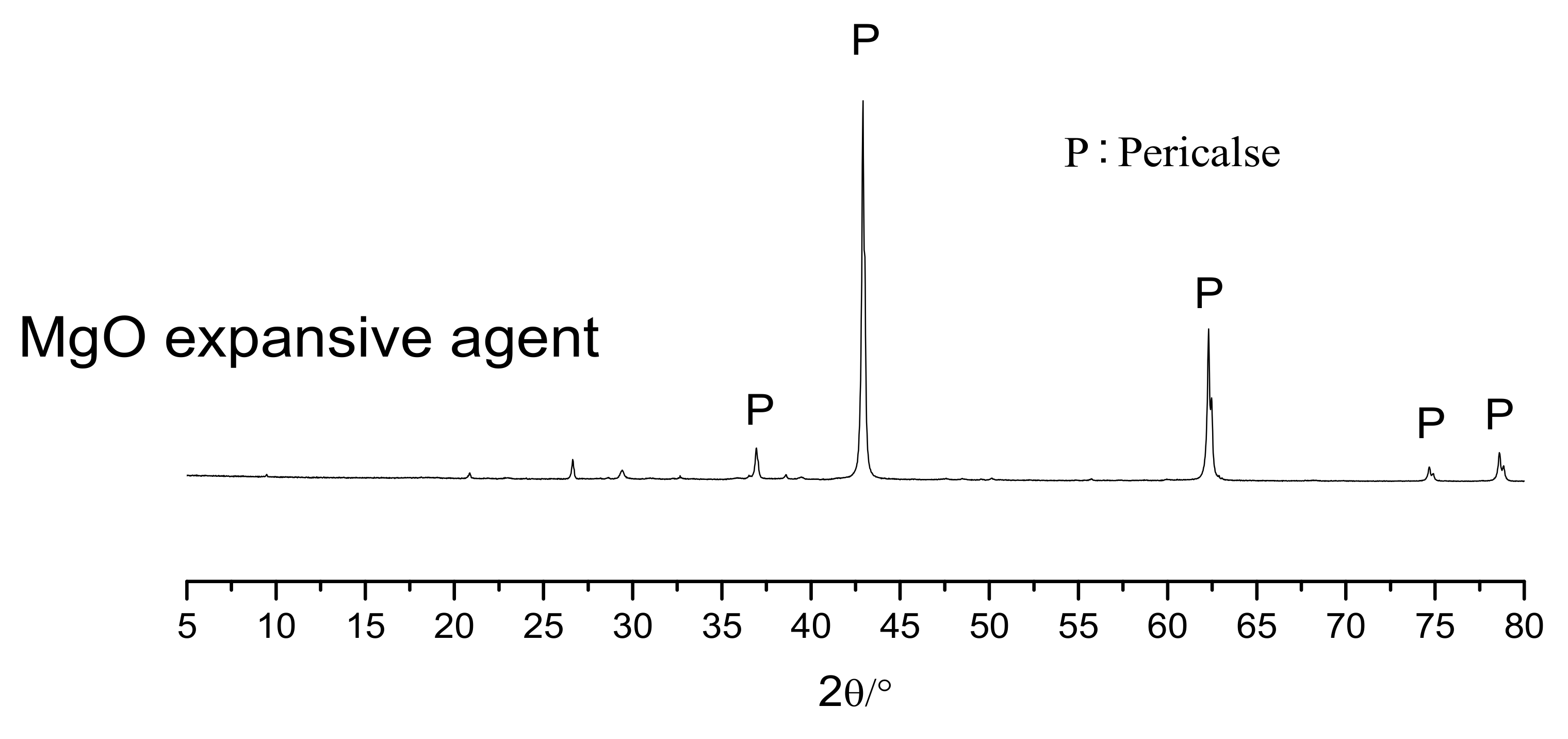
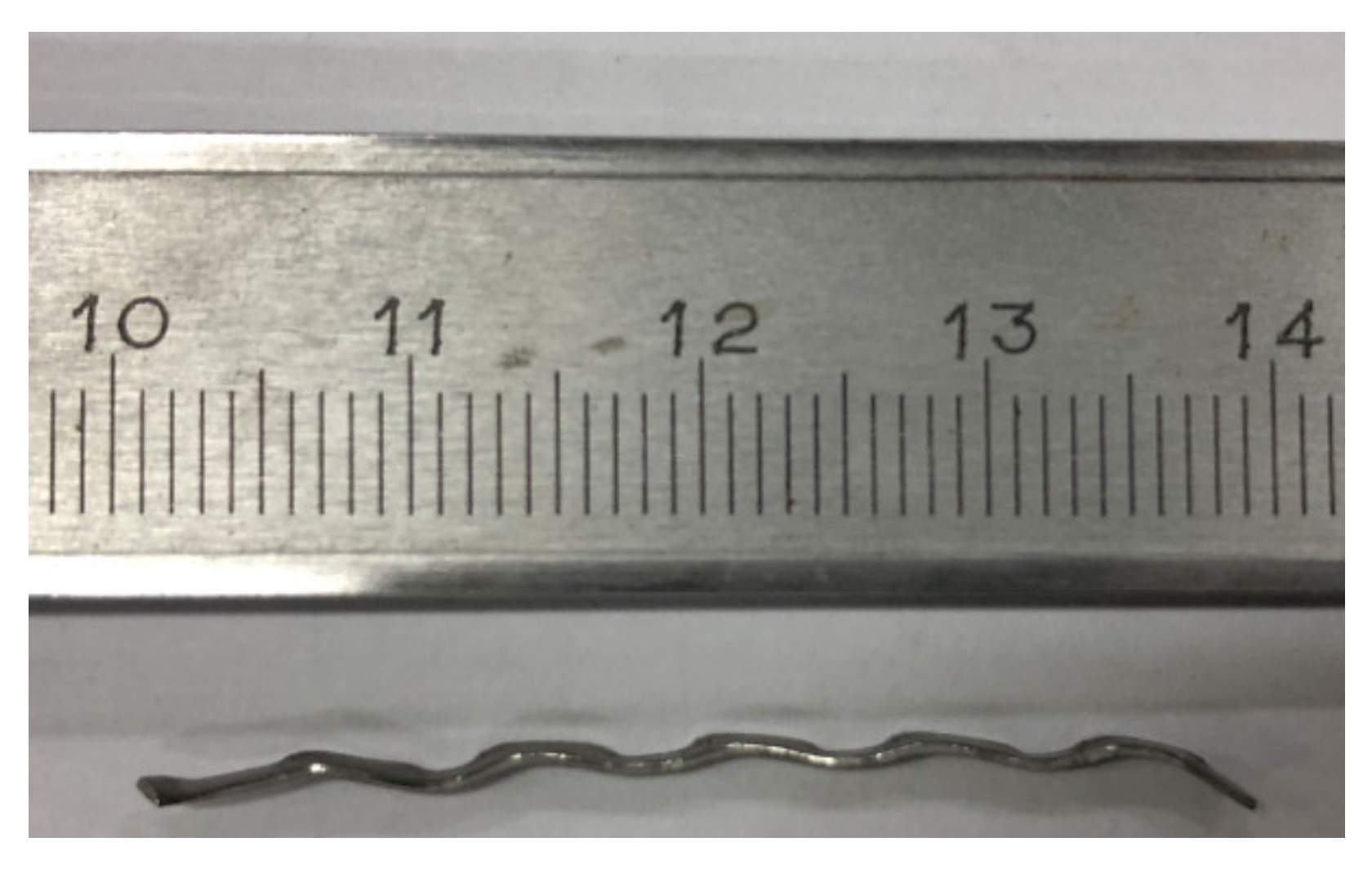
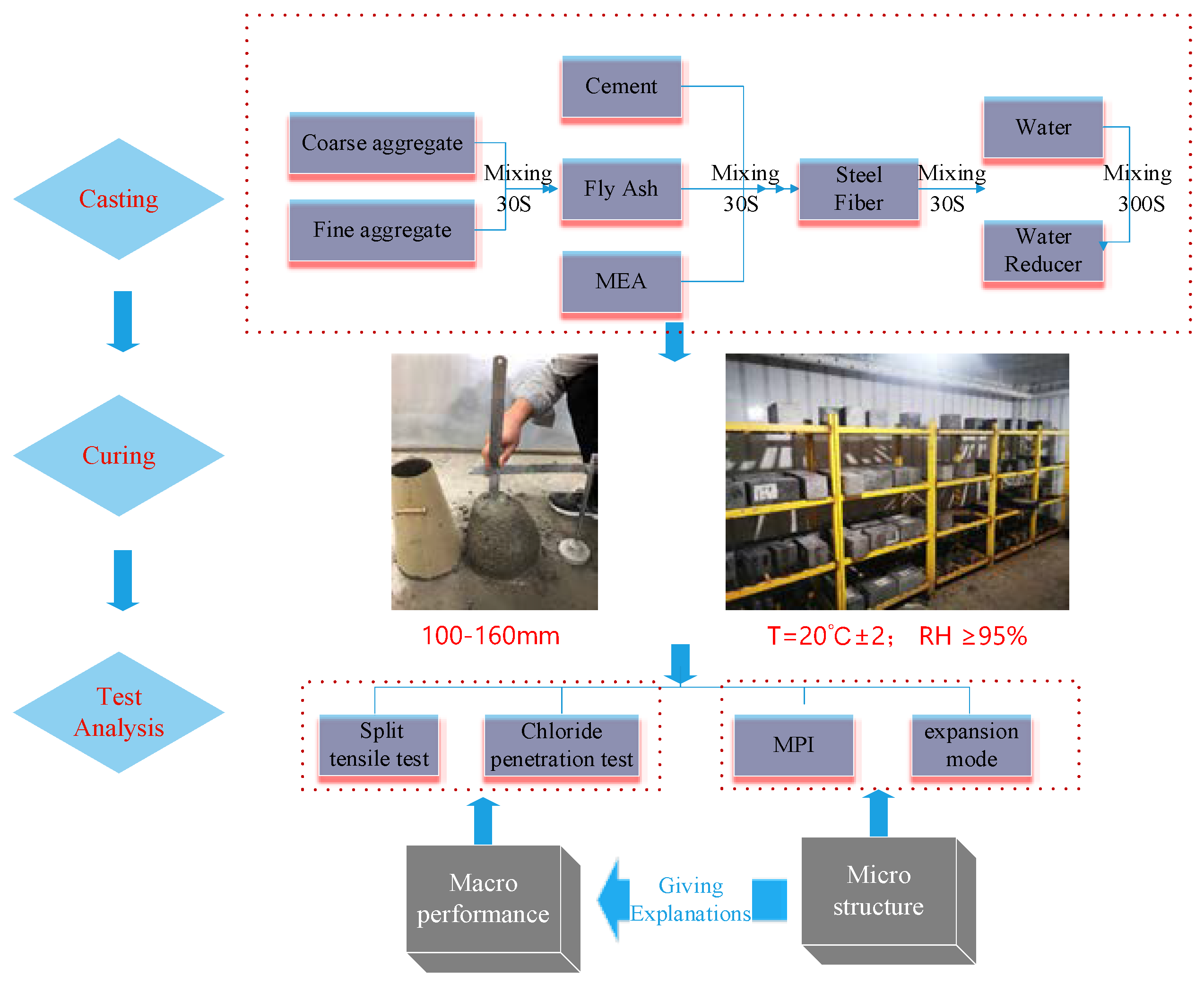
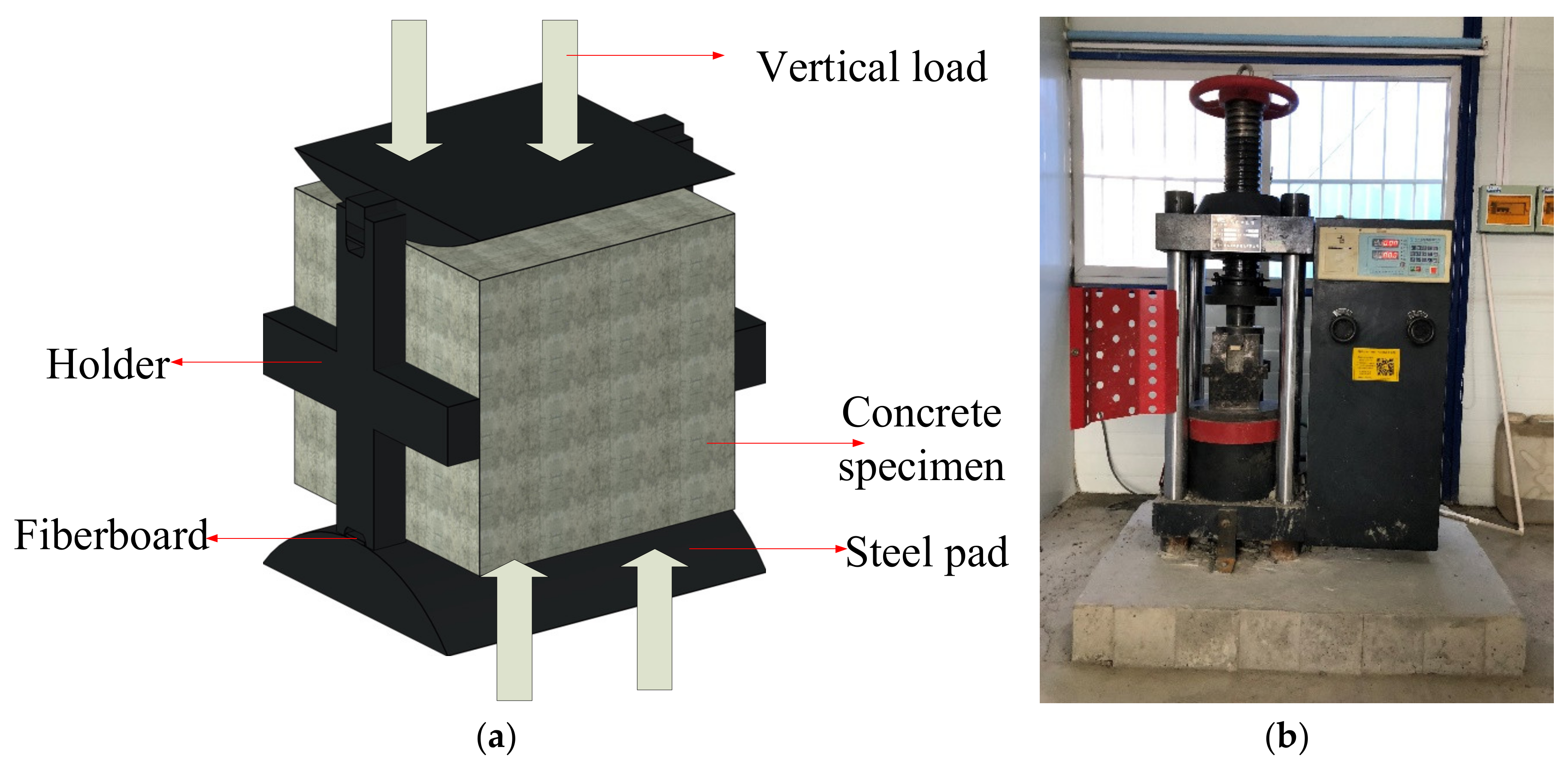

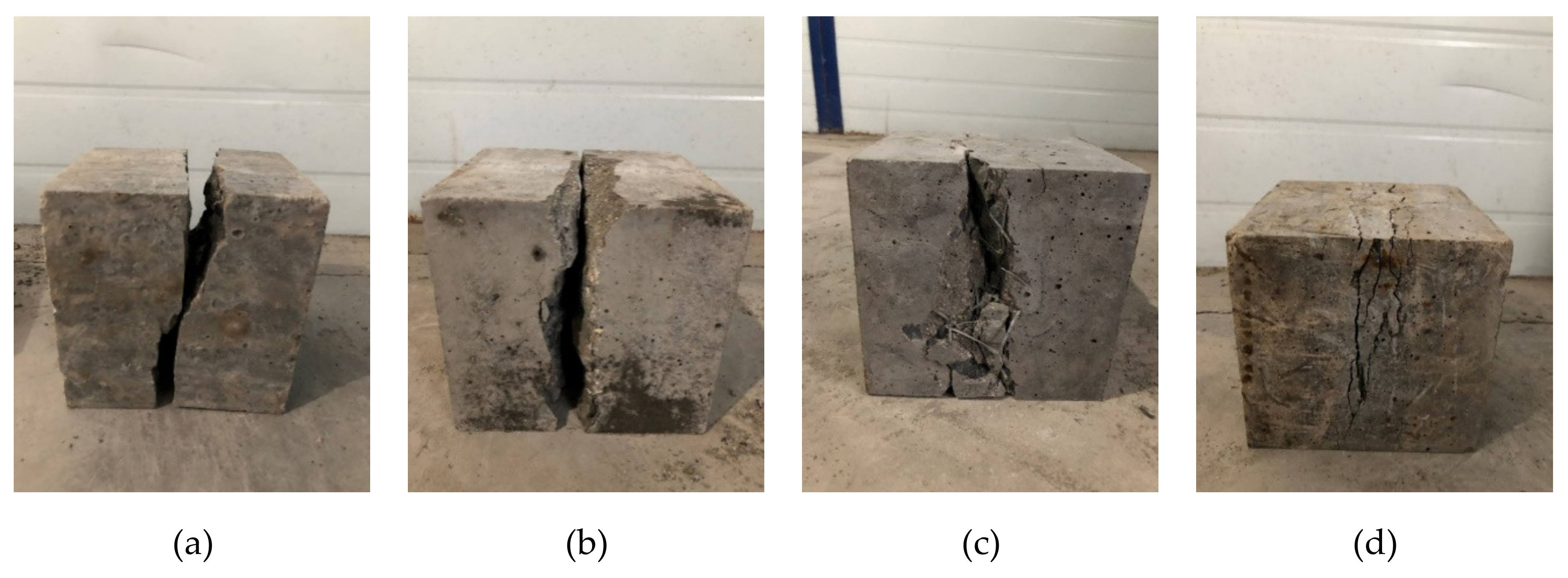
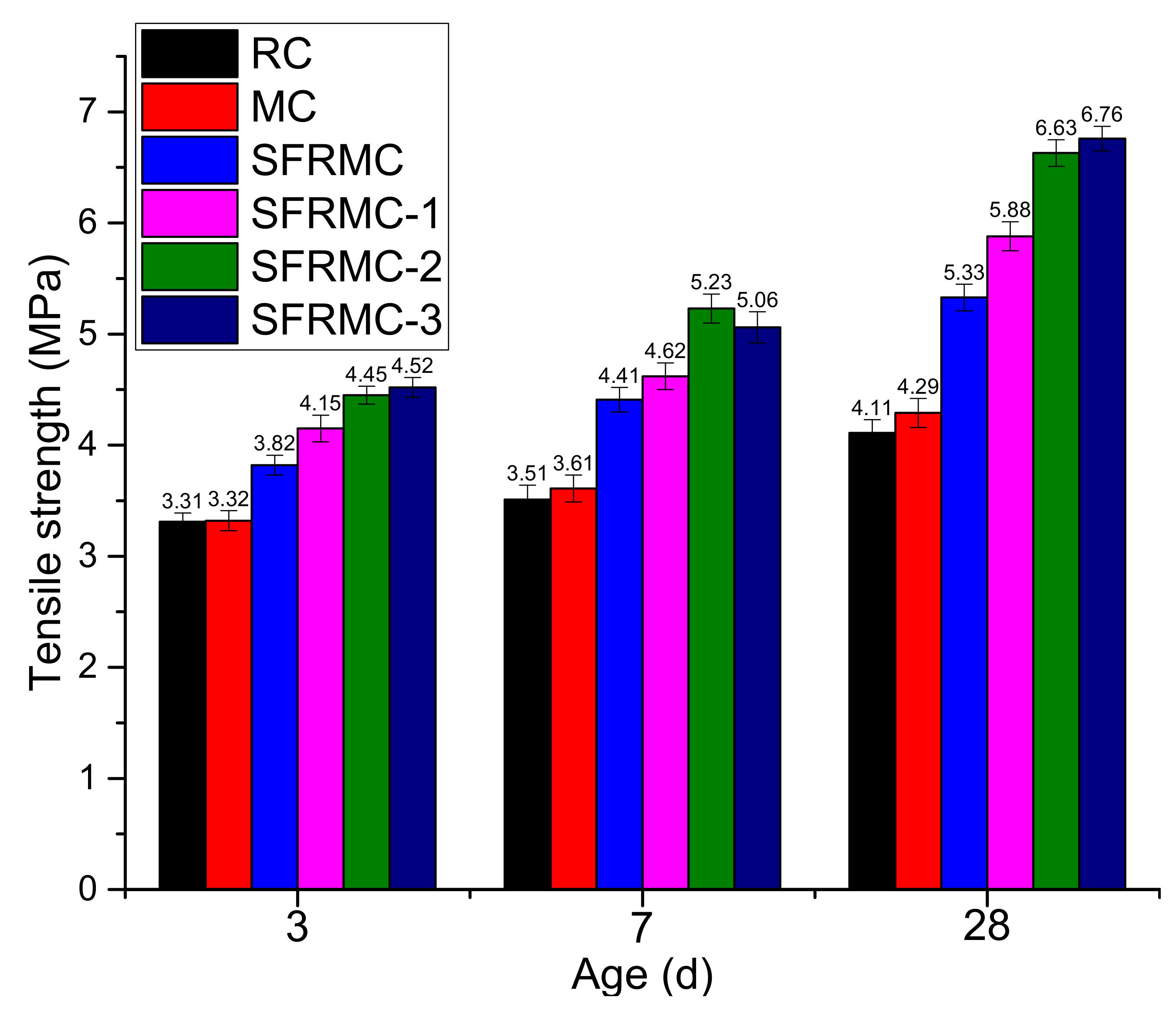
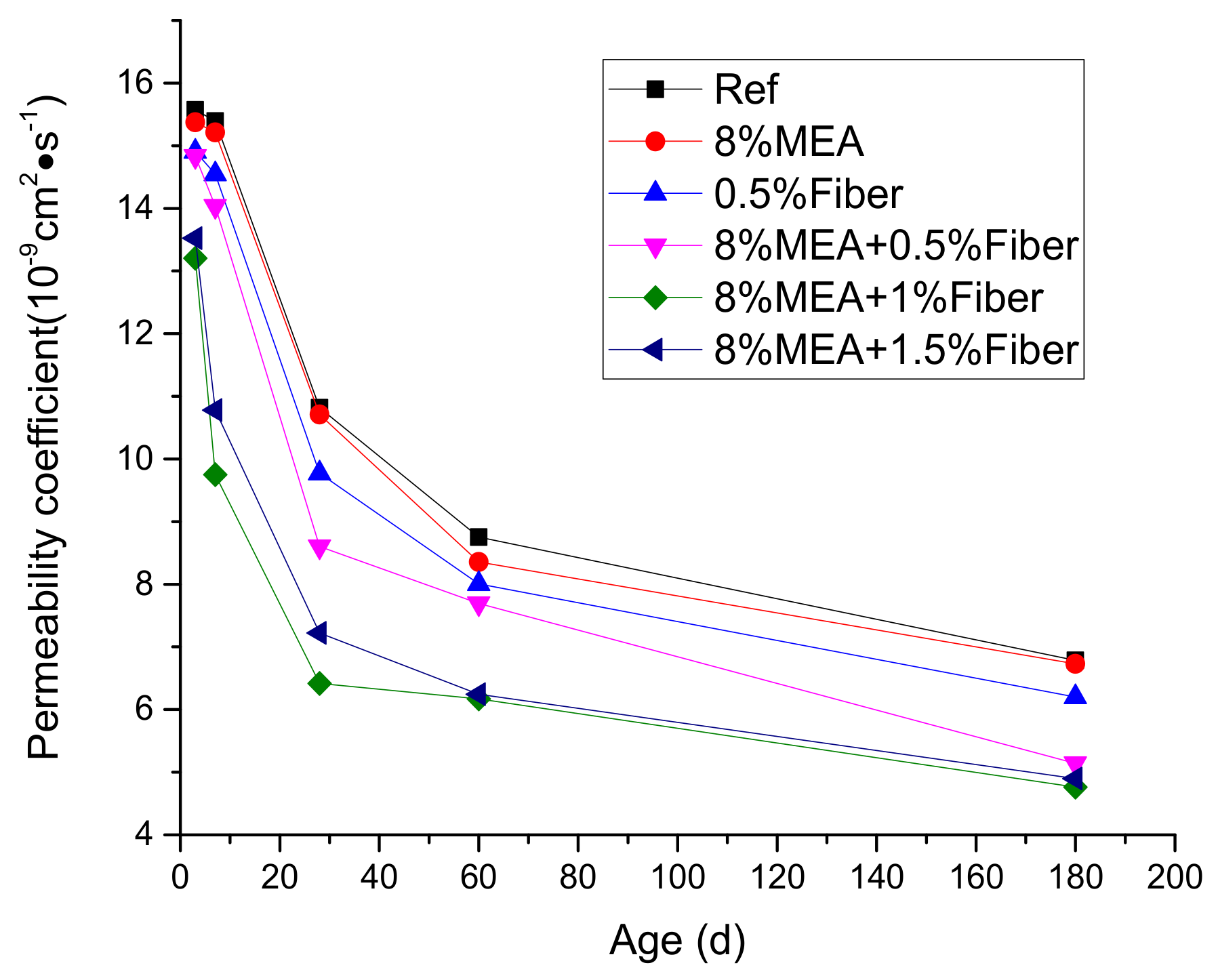
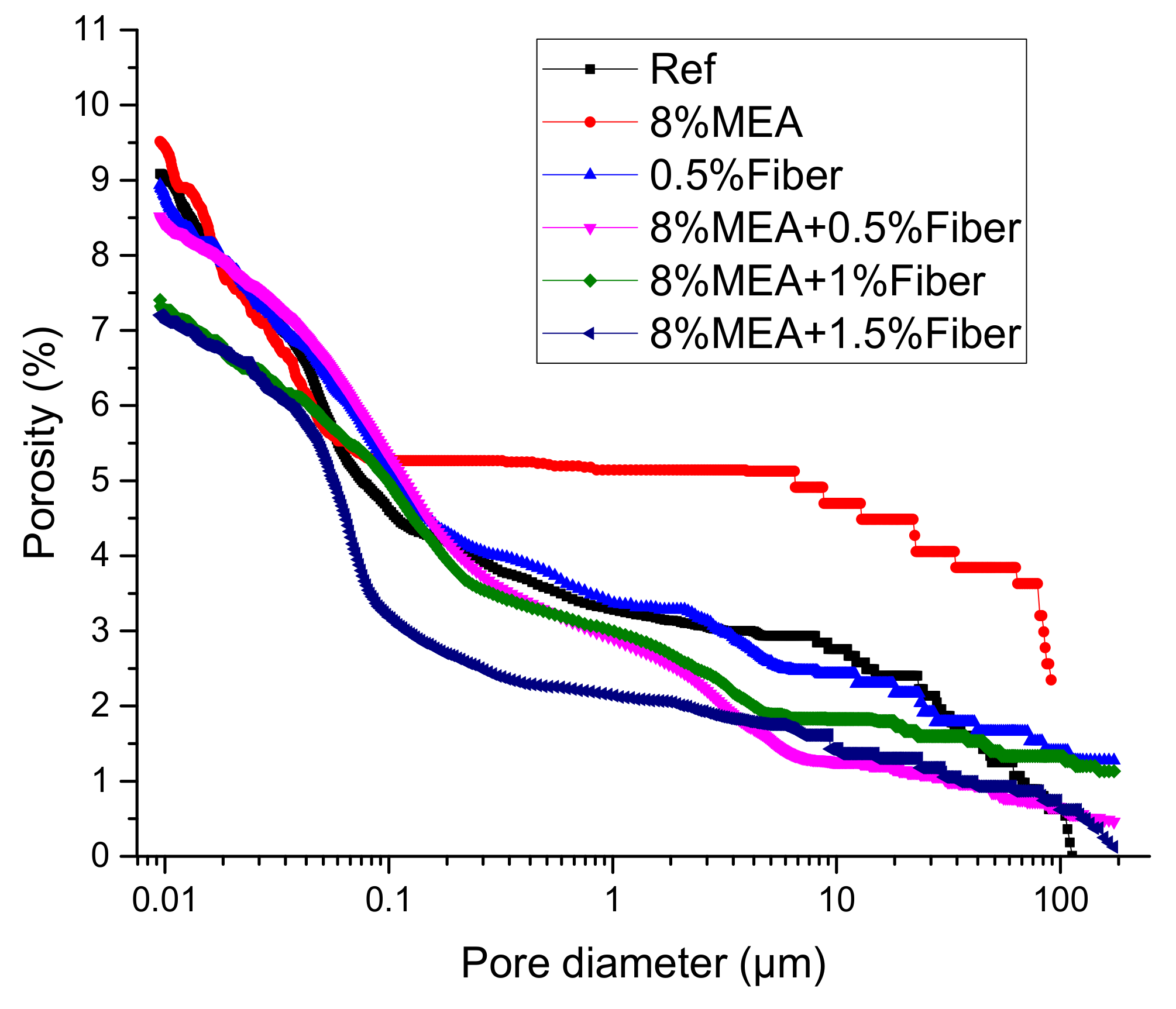
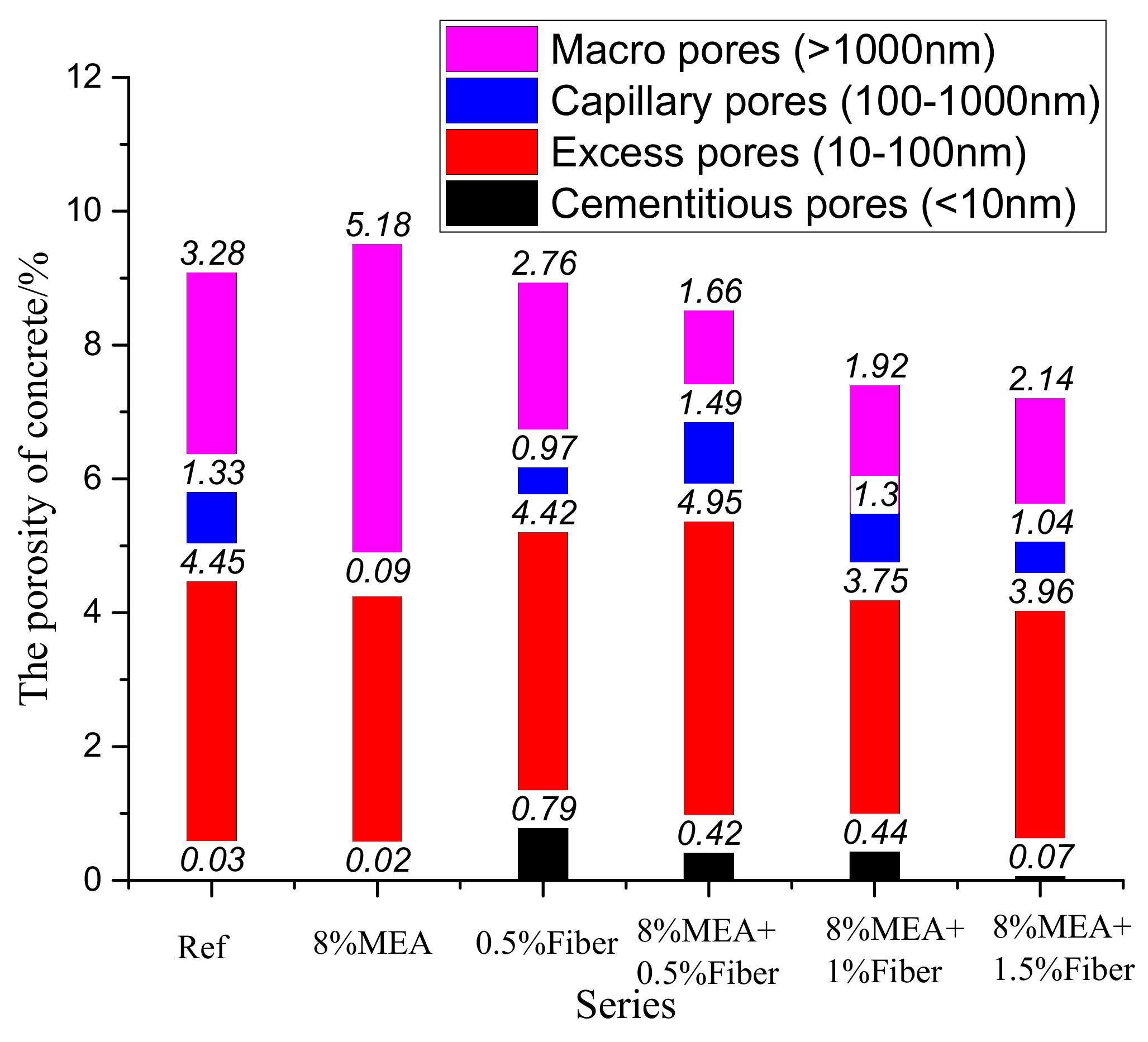
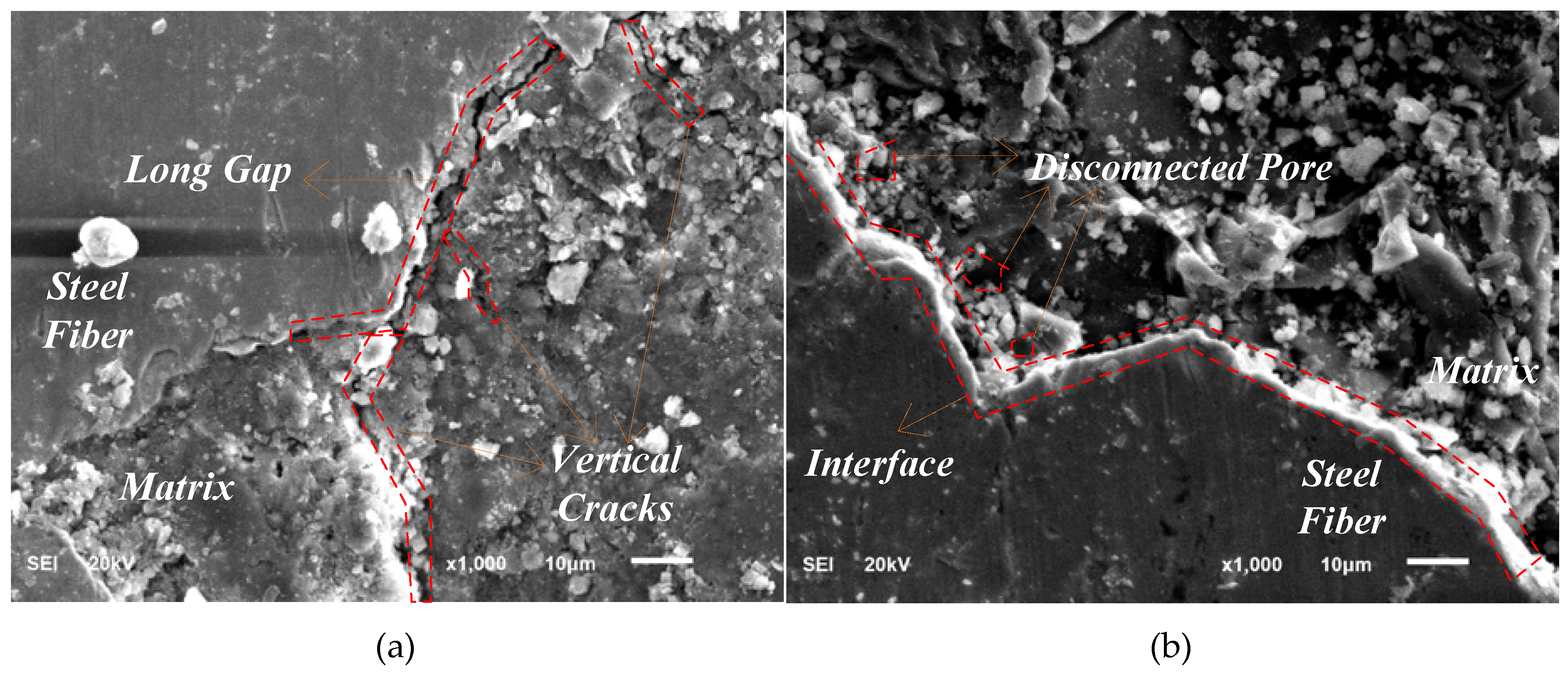
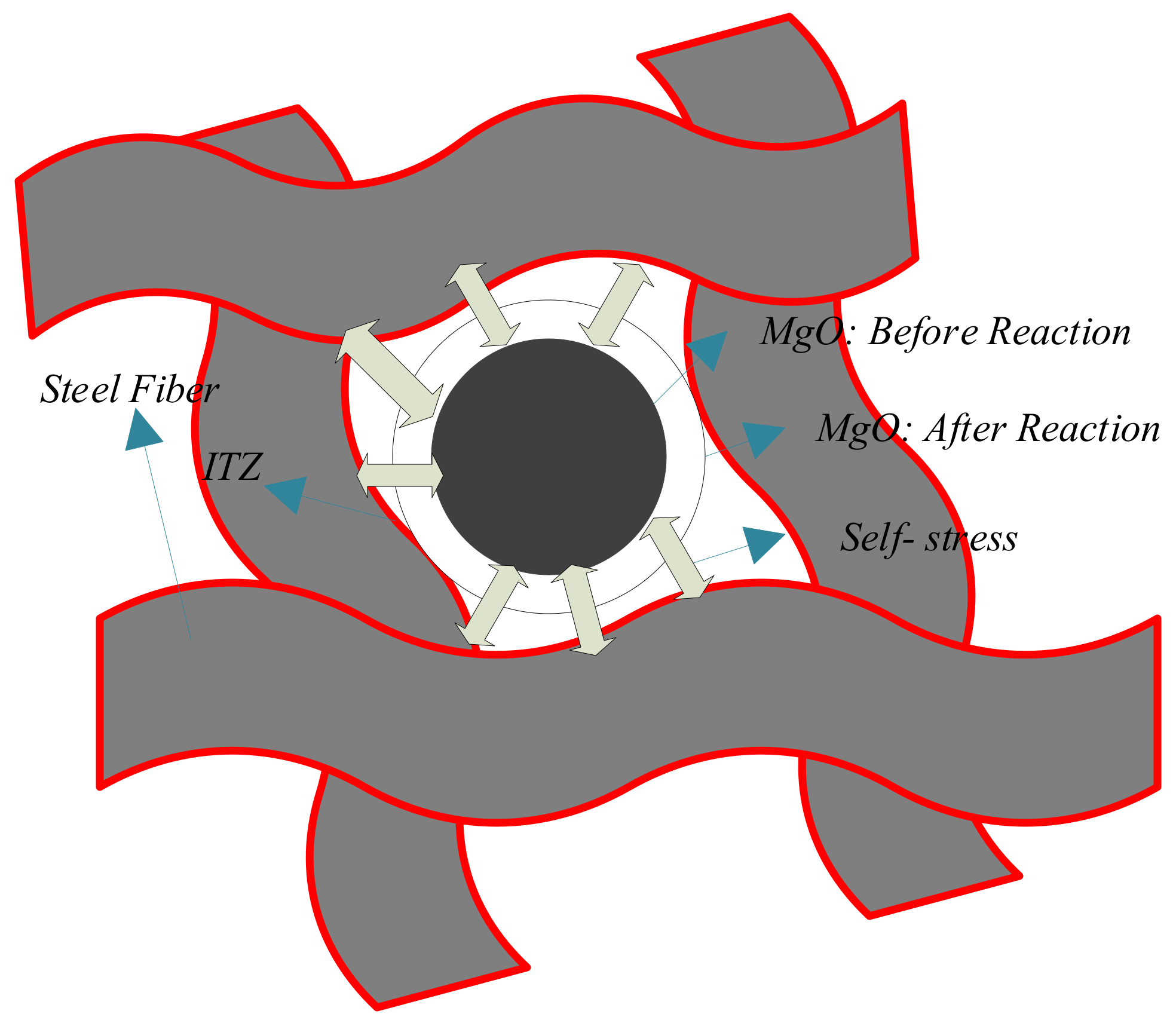
| Type | Chemical Composition /wt% | |||||||||
|---|---|---|---|---|---|---|---|---|---|---|
| CaO | MgO | Al2O3 | SiO2 | Fe2O3 | SO3 | K2O | Na2O | Loss | Total | |
| Cement | 60.51 | 2.18 | 6.34 | 22.02 | 3.05 | 1.86 | 0.47 | 0.23 | 1.96 | 98.62 |
| Fly ash | 5.01 | 1.03 | 34.18 | 48.91 | 5.22 | 1.20 | 0.89 | 0.62 | 1.50 | 98.56 |
| MgO | 3.19 | 85.44 | 0.73 | 4.45 | 0.42 | 0 | 0 | 0 | 4.49 | 98.72 |
| Specimen | Slump/ mm | Composition /kg·m−3 | |||||||
|---|---|---|---|---|---|---|---|---|---|
| Cement | Fly Ash | Fine Aggregate | Coarse Aggregate | Water | Water Reducer | Steel Fiber | MgO | ||
| Ref (RC) | 155 | 450 | 50 | 713 | 1025 | 160 | 6 | 0 | 0 |
| 8%MgO(MC) | 132 | 450 | 50 | 713 | 1025 | 160 | 6 | 0 | 40 |
| 0.5%Fiber(SFRC) | 141 | 450 | 50 | 713 | 1025 | 160 | 6 | 39 | 0 |
| 0.5%Fiber + 8%MgO (SFRMC-1) | 128 | 450 | 50 | 713 | 1025 | 160 | 6 | 39 | 40 |
| 1%Fiber+8%MgO (SFRMC-2) | 115 | 450 | 50 | 713 | 1025 | 160 | 6 | 78 | 40 |
| 1.5%Fiber + 8%MgO (SFRMC-3) | 103 | 450 | 50 | 713 | 1025 | 160 | 6 | 117 | 40 |
| Type | Curing Age | ||||
|---|---|---|---|---|---|
| 3 d | 7 d | 28 d | 60 d | 180 d | |
| Ref (RC) | 15.6 | 15.4 | 10.8 | 8.8 | 6.8 |
| 8%MgO (MC) | 15.4 | 15.2 | 10.7 | 8.4 | 6.7 |
| 0.5%Fiber (SFRC) | 14.9 | 14.5 | 9.8 | 8.0 | 6.2 |
| 8%MgO + 0.5%Fiber (SFRMC-1) | 14.8 | 14.0 | 8.6 | 7.7 | 5.1 |
| 8%MgO + 1%Fiber (SFRMC-2) | 13.7 | 11.2 | 6.4 | 6.2 | 4.8 |
| 8%MgO + 1.5%Fiber (SFRMC-3) | 11.1 | 10.3 | 7.2 | 6.2 | 4.9 |
© 2020 by the authors. Licensee MDPI, Basel, Switzerland. This article is an open access article distributed under the terms and conditions of the Creative Commons Attribution (CC BY) license (http://creativecommons.org/licenses/by/4.0/).
Share and Cite
Jiang, F.; Deng, M.; Mo, L.; Wu, W. Influence of Combined Action of Steel Fiber and MgO on Chloride Diffusion Resistance of Concrete. Crystals 2020, 10, 338. https://doi.org/10.3390/cryst10040338
Jiang F, Deng M, Mo L, Wu W. Influence of Combined Action of Steel Fiber and MgO on Chloride Diffusion Resistance of Concrete. Crystals. 2020; 10(4):338. https://doi.org/10.3390/cryst10040338
Chicago/Turabian StyleJiang, Feifei, Min Deng, Liwu Mo, and Wenqing Wu. 2020. "Influence of Combined Action of Steel Fiber and MgO on Chloride Diffusion Resistance of Concrete" Crystals 10, no. 4: 338. https://doi.org/10.3390/cryst10040338
APA StyleJiang, F., Deng, M., Mo, L., & Wu, W. (2020). Influence of Combined Action of Steel Fiber and MgO on Chloride Diffusion Resistance of Concrete. Crystals, 10(4), 338. https://doi.org/10.3390/cryst10040338





